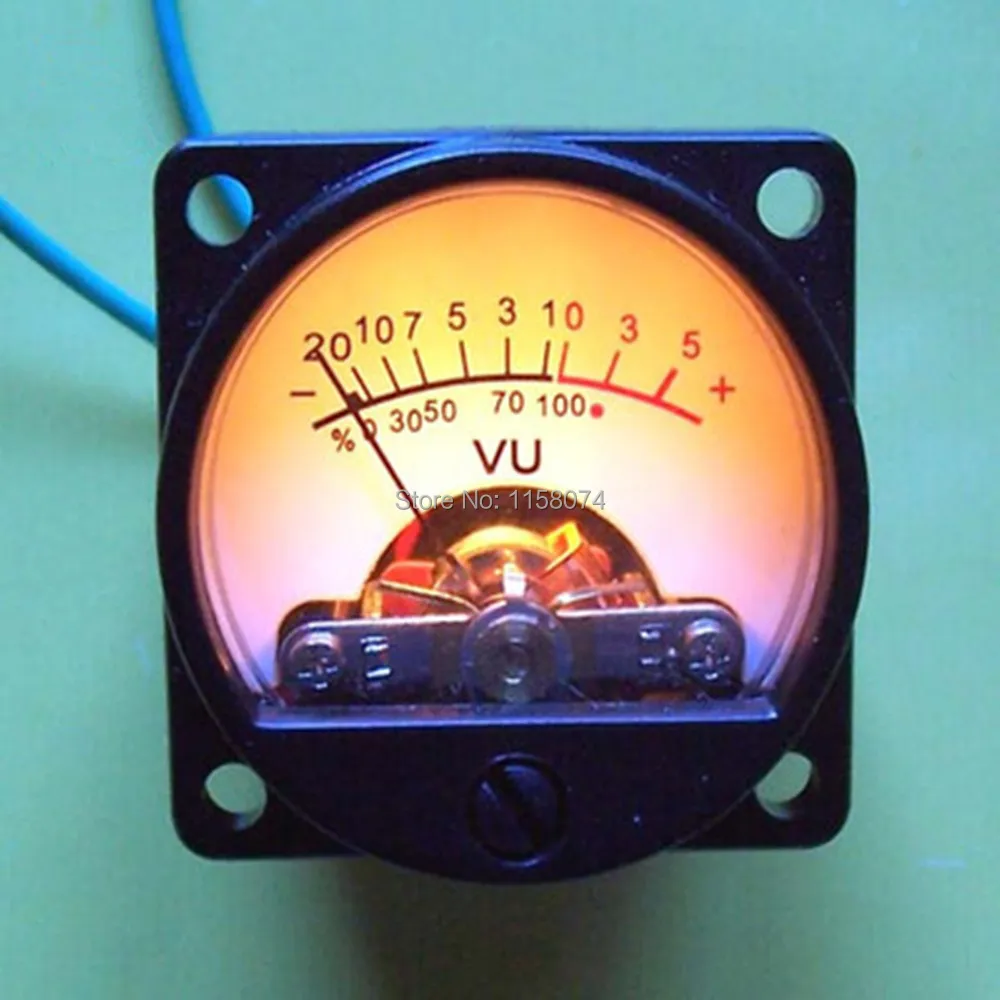


Why? To make sure it’s all balanced and delicious. You add a pinch of this and a dash of that, tasting along the way.

Audio vu meter movie#
Think of your favorite epic movie scene – yeah, that’s the power of volume dynamics! What is the ‘sweet spot’ when using a VU meter? The VU meter can guide you to create dynamic contrast between different parts of a song, much like how a film director uses quiet and loud scenes for dramatic effect.

In music, volume can make or break the energy and emotion of your track. Volume isn’t just about keeping your neighbors from banging on your walls. But here’s the clincher: the average level of your track should hover around -18 dBFS, and the VU meter is your best buddy in hitting that sweet spot.
Audio vu meter full#
If you’re new to audio engineering, you might have come across the term ‘dBFS.’ It stands for decibels relative to full scale, which is a unit of measurement for audio levels in the digital domain. You’ll notice, too, that VU meters don’t stop at 0 and actually go positive by a few dB.Why does a VU meter matter in music production? But o dBVU is roughly the equivalent of -18 dBFS - a perfectly safe place to be. We know that at above 0 dB Full Scale we start digitally clipping, and any increase in level will destroy our mix. Today, we use plugin emulations of all this fantastic analogue gear - which means that sweet spot still exists, and is right at 0 dBVU!ĭon’t be scared to hit 0 on a VU meter. Old consoles and outboard were designed to sound their best being pushed a bit. They did this because the noise floor with tape was so high, they had to print their signal above it. Engineers used to print really hot and push their levels up to and beyond 0 dB on their VU meters. Records were made very differently before digital became the norm. For instance, if you see the needle jump 5 to 10 dB every time the kick drum hits, you have a level problem with the kick! You can go back and turn it down, or you can control those transients with compression maybe a bit of EQ on the sub frequencies some saturation to soften it, etc. When you have a meter on your mix bus, you should also be watching for big leaps in the average signal. Again, we’re talking energy and “feel” more so than actual volume as it comes to VU meters. You don’t need to see a massive jump on the meter, but even just a dB or two louder can be felt by listeners.
Audio vu meter pro#
Video can’t be loaded because JavaScript is disabled: Gain Staging Explained – 3 things you need to know – Warren Huart: Produce Like A Pro () It’s more a representation of energy and what listeners feel. So, VU represents “loudness” more than it represents volume - we can leave that to full scale. Instead, we hear in averages the same way that a VU meter does. We don’t have supersonic hearing that catches every single change in level with pinpoint accuracy. VU meters “hear” like our earsĮven though full scale meters are extremely precise, that’s not how the human ear works. However, they represent signal in a more natural way and are powerful tools to reference when mixing. You could argue that VU meters are technically less accurate than FS since they don’t show every single peak and drop in level. So, the meters in your DAW are full scale meters that actually represent level differently than VU meters. The main difference is that a VU meter shows the average volume of an instrument this is the opposite of the full scale meters in our DAW, which show the exact moment-to-moment volume of an instrument. The VU meter is actually so useful that we have plugin emulations as well!Īfter DAWs came out, we started measuring level in dB Full Scale as opposed to volume units. They’re still used on gear today, though, and of course you’ll find them on classic consoles and outboard gear. It’s designed to represent audio signal level and remained the standard well through the ’80s until digital came out. The VU meter - for “volume unit” - was developed in 1939 by Bell Telephone in conjunction with CBS and NBC. And let’s face it, many of us are working entirely in-the-box these days! But unless we spend a lot of time around analogue outboard gear, we probably aren’t super familiar with them. Most of us have a rough idea of what a VU meter does.


 0 kommentar(er)
0 kommentar(er)
